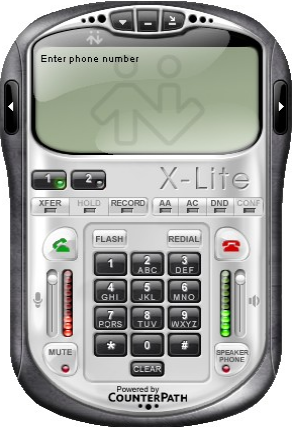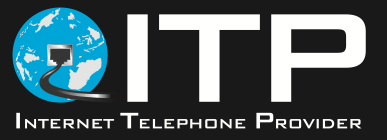VoIP Glossary
Encountered by un-familiar VoIP glossary term or just want to quickly find an abbreviation and acronyms? Check it out on this page. You can also use a short-cut search by pressing Ctrl + F on your keyboard (Windows) and Command + F (Macintosh) or the search box found on the bottom of this page.
A
ATA: stands for Analog Telephone Adapter also know as VoIP Phone Adapter.
ADSL: Asymmetric Digital Subscriber Line.
ATDT: Auto Dial Tone
B
bandwidth: Using a bandwidth measurement tool you can test your upload and download Internet speed in Kbps, Mbps or Hz depending on the network type you have.
broadband: high speed Internet service. Cable and DSL Internet are among the popular broadband services.
BRI: short for Basic Rate Interface.
C
Cable Internet: High speed Internet access provided over cable television network.
Cable modem: a device used as bridge to connecting to the Internet service provided by cable TV company.
Call Block: a feature allows you to block unwanted calls.
Caller ID: a subscribed service offered by your local phone company which allows you to identify the phone number of the incoming calls.
Call Waiting: a subscribed service offered by your local phone company which allows you to detect incoming calls even when you are on the line with another party.
D
Dial-Up Internet: a type of Internet connection established using PSTN line. Maximum speed of 56 Kbps can be achieved with on a dial-up Internet access.
Dial-Up IP-Phone: a type of VoIP hard phone that comes with built-in modem and RJ-11 port for dialing to ISP and for Internet access.
Dedicated Networks: private networks also known as private dedicated transport network, digital services network, dedicated network and packet switched
DNS: Domain Name Service, A standardized system that provides information about host name and IP address mapping throughout an Intern network. DNS maintains this information in a decentralized distributed database
DS: Digital Service also known as Digital Signal and Digital Services Carrier Network, a type of network or digital lines that provide you higher bandwidth
DSL: Digital Subscriber Line. A type of high speed Internet access. DSL is one of the popular digital service, 256 Kbps speed is 4 times faster than a dial-up Internet.
DSL modem: a device used as a bridge to connect to high speed/broadband Internet access.
DTMF: Dual-Tone-Multi-Frequency
E
E1: European term for PRI line, E1 provides 32 channels/lines. The term used in North America is T-1 which provides 24 channels.
E-911: enhanced 911 emergency service.
encapsulation: the process of network traffic packetizing to transport data, voice and video. Network professionals explain encapsulation as enclosing voice (data) into an envelop and mailing it through postal mail (IP networks).
F
FCC: Federal Communication Commission. A U.S government regulating body which oversees communication products in the U.S. FCC is also a renowned and internationally recognized reference body.
FoIP: stands for Fax over Internet Protocol. The method of sending fax through Internet.
FXO: Foreign Exchange Office is the port that receives the analog telephone line from your phone company (PSTN).
FXS: Foreign Exchange Station is the port where telephone handsets connected.
G
VoIP Glossary
Gateway: A device used for making telephone calls and fax. See VoIP gateway
Gatekeeper: a terminal device that manages other VoIP devices. See VoIP gatekeeper
H
H.323: a standard protocol by ITU (International Telecommunications Union) used in IP Telephony / VoIP technology.
hard phone: VoIP equipment. See VoIP devices.
Hz: short for Hertz.
I
IP: Internet Protocol
IP-PBX: short for Internet Protocol - Private Branch eXchange is VoIP based telephone exchange used by companies. In business telephone systems, IP-PBX can be purchased or hosted by VoIP providers, unlike traditional PBX provided by CLEC/ILEC carriers.
IP telephony: a technology that allows you to make and receive telephone calls within LAN. See VoIP.
ISDN: short for Integrated Services Digital Network.
ISP: Internet Service Provider, a company or business entity which offers you an Internet access.
J
Jitter: in IP Telephony/VoIP terminology jitter is a type of packet delay caused by improper queuing, slow or congested Internet network.
K
Kbps: kilobits per second
L
LAN: Local Area Network
LD: Long Distance
M
MAN: Metropolitan Access Network
Mbps: megabits per second
N
NAT: Network Address Translation
NIC: Network Interface Card
O
Online Phone Call: a method of placing telephone call through Internet. See PC to Phone Calls.
Origination: in IP Telephony/VoIP an origination is a process of taking a call off the Internet or from PSTN lines and sending to the destination (called party) over Internet network by an ITSPs.
OSP: stands for Open Settlement Protocol. A client/server protocol used by Internet service providers to exchange authorization, accounting, and usage information to support IP telephony. Open Settlement Protocol is implemented in voice telephony gateways such as softswitches, H.323 multimedia conferencing gateways, and Session Initiation Protocol (SIP) proxies. Reference Wikipedia.
P
VoIP Glossary
POP: Point of Presence
POTS: Plain Old Telephone Service
Private Networks: DS networks also known as private dedicated transport network, digital services network, dedicated network and packet switched
PRI: stands for Primary Rate Interface. In Europe known as E-1 which provides 32 channels/lines. In North America T-1 which provides 24 channels.
PSTN: Public Switched Telephone Network, Public Telephone Network, Switched Network, Circuit Switched. See Private Networks above.
Q
Q.931: is a type of an ISDN protocol.
QoS: short for Quality of Service generally defined on a VoIP phone service call connection.
QSIG: stands for Q-Signaling.
R
RAS: short for Registration, Admission and Status, is a management protocol tool used for VoIP Gateways and VoIP Gatekeeper endpoints.
Router: a network device that also acts as a hub or switch. See VoIP router these types of routers provide LAN, WAN, FXS and FXO ports.
RRSV: stands for Resource Reservation Protocol.
RTP: short for Real-Time Transport Protocol.
S
Soft-phone: an application downloaded on computers to enable users to make a phone call through the Internet. See VoIP soft-phone.
 Soft-Phone by X-LITE Soft-Phone by X-LITE |
 A Headset and Microphone A Headset and Microphone |
SRTP: Secure Real-time Transport Protocol
T
TCP: Transmission control protocol. Often written as TCP/IP.
T1: North America term for DS type of network which consists of 24 channels with bandwidth of 1.536 Mbps (each channel carries 64Kbps). T1 is a term used in North America while E1 in Europe
U
UDP: User Data-gram Protocol.
V
VoIP Glossary
VoIP: Voice Over Internet protocol, a technology that allows you to make and receive telephone calls over the Internet network. Technically speaking calls made from LAN to WAN and to traditional PSTN or cellular phones. See above IP Telephony.
VoWi-FI: short for Voice over Wi-Fi. VoIP service offered over Wi-Fi. See Wi-Fi below.
VPLM: VOICE PACKET LOSS MONITORING, a feature that enables users to evaluate the network condition on the local side as well as the remote’s side
W
WAN: Wide Area Network, a network that covers outside LAN i.e metropolitan/regional, national or international boundaries
Wi-Fi: wireless local area network (WLAN) developed by WiFi alliance; an organization that owns WiFi trade mark.
Wi-Fi Phone: a type of cellular phone that enables you to make VoIP calls over Wi-Fi network or hot-spot. See wireless VoIP Phones.
Wi-Max: short for Worldwide Interoperability for Microwave Access. WiMax is broadband wireless faster than WiFi more than six times and can work up to 31 miles.
WWW: World Wide Web
X
XMPP: short or stands for Extensible Messaging and Presence Protocol. It is XML based protocol.
Z
ZRTP: an in-band key exchange protocol for SRTP based based on either the Diffie–Hellman (D–H) or the elliptic curve Diffie–Hellman (ECDH) algorithms, with Man-in-the-Middle protection based on human voice recognition. (Glossary courtesy of ZRTP.org)
#
911: emergency service call (North America)
Didn't find what you were looking for? To find it quickly enter your keyword on the following VoIP glossary Site-Search box. If you still don't find it submit a request on VoIP FAQ page.
Related Articles...You May Be Interested In:
VoIP vs IPT
External related links and resources:
VoIP › VoIP Glossary
VoIP › VoIP Resources › VoIP Glossary
Related searches, tages, keywords: voip technical terms voip acronyms vpn acronym voip meaning sip







